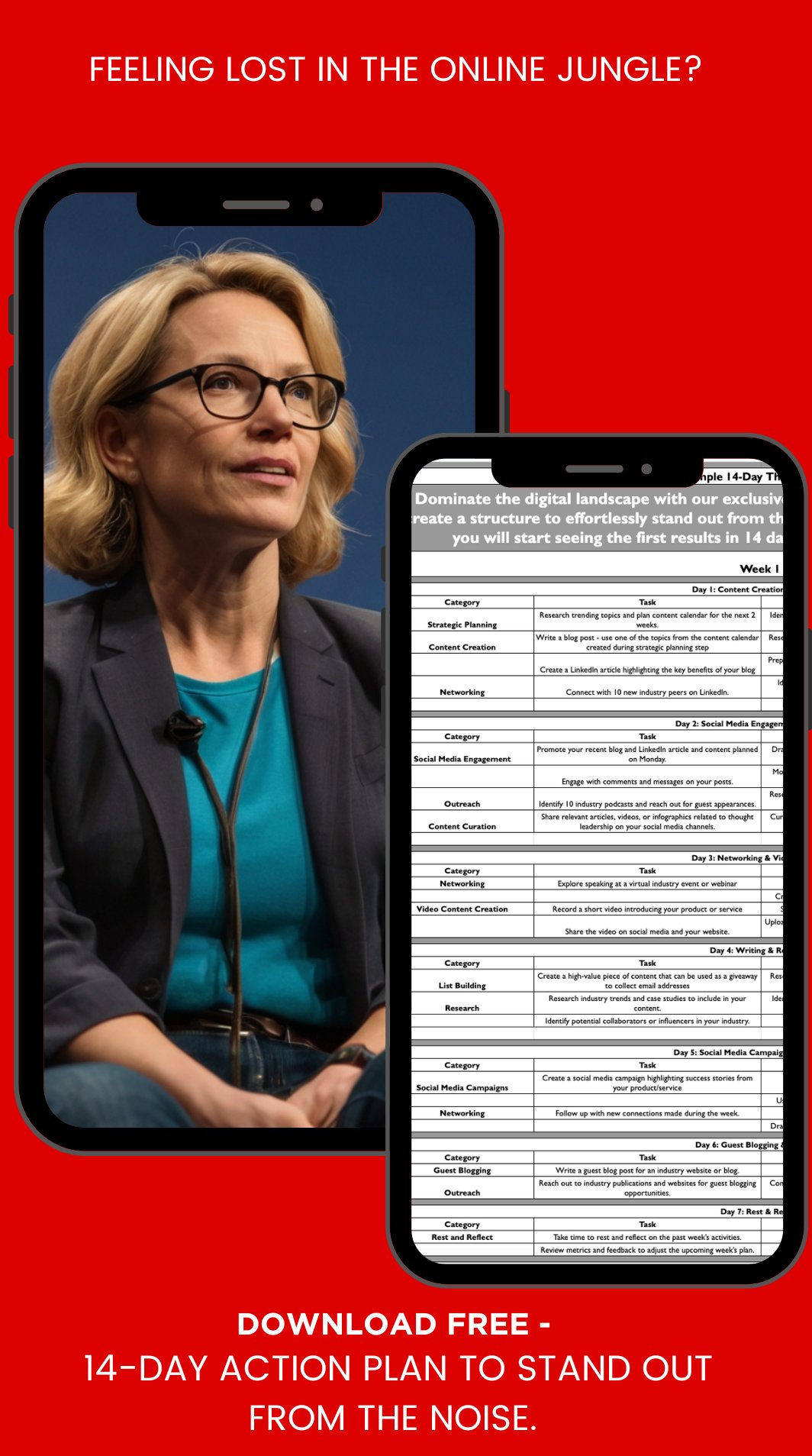It is very rare to see a business owner who does not blog. However, the majority of the content is still ignored by the readers.
Only a few blogs are shared and even fewer see comments. At times it feels that you are talking to yourself.
[bctt tweet=”Over 85% of published content is ignored by the readers. ” username=”@tredigital”]
There are many causes of failure (we’ll talk about these later). For today, I wanted to focus on the blog format.
Before you start planning your content strategy, you must understand the goals of your content.
Whether you are writing to elevate your branding, generate more email sign-ups, or increase traffic to your blog, there is no one content style to fit them all.
[bctt tweet=”There is not a single content style: blogging for sales, leads or branding is vastly different.” username=”@tredigital”]
If you are still struggling to determine which content style is right for you, start by determining your goals.
It is not enough just to say “I want more business”. Being specific will help you determine the right content style.
We created a simple cheat-sheet to help you better format your blogs.
If you do not want to read the entire blog, skip straight to the Blog Format checklist.
Table of Contents
ToggleWriting for a book/essay style blogs
Best suited for creatives in the fine arts industry. This style is more personal, written without consideration for expanded readership or massive traffic.
This is more of a traditional style rather than modern internet style writing. It is still beneficial for companies whose brand incorporates a more human or personal message.
Think of a bookstore’s “suggested reading” page or your favorite author’s website. Typically, readers of this blog are already fans or followers of the brand or person.
Best practices for an essay-style blog:
- Structure this like a basic essay.
- Incorporate five key points framed with an introduction and a conclusion.
- Think about flow and readability. One idea leads into another.
- Write in a generally personable voice.
Here’s an example of Elizabeth Gilbert’s blog. She’s the writer of Eat Pray Love and, while she uses her website to inform her fans of new books and TV appearances, she also uses it as a platform to show her fans her personal side.
Writing for bots/SEO-friendly content
By working to associate certain brands with popular or trending phrases and keywords, this style is perfect for new businesses or companies in rebranding mode.
Things become more complicated if you are attempting to write with an SEO in mind.
The rules for what is considered an SEO-optimized blog are constantly changing but if you are trying to generate awareness and buzz, some of the key items remain the same.
Best practices for an SEO-friendly blog:
- Research top keywords used by other in your industry using Buzzsumo.
- Integrate keywords into the title, first paragraph, and product description.
- Identify the phrases and words you want your company or product to be associated with and then pepper your blog with these and the synonymous keywords.
- Put these keywords at the beginning of paragraphs and sections.
- Direct your viewers through your blog with “long tail phrases” that support your keywords.
- Create internal linking system (i.e. link to your old blogs and content)
- Include links to some of the higher ranking content created by others
Do not overdo the keywords. Make sure to explain what the keywords mean for your blog, your business, your brand and your product. Avoid using jargon or hard to understand phrases.
While the blogtyrant blog has covered SEO optimization, all his other posts are, themselves, SEO-optimized in the way they are laid out and centered around the key, searchable phrases.
Writing for Web readers/”skimming” version
Especially if your product or company appeals to mobile users, this blog format ensures that users get the important gist of your post.
We interact with the web differently than we do with a book or newspaper. Web readers find comfort in short sentences and visual aides. Your blog should still be able to get the attention of a distracted web reader.
Best practices for web readers:
- You have a better chance of getting your messages across if your main points stand out from the rest of the text (use headers, bullet points, separators, clear section, etc).
- Write in shorter sentences, use words that are easy to understand, create a lot of space between lines.
- Add multiple images to illustrate your points.
- Think of your blog visitors as viewers, not readers. There is nothing that will turn them off more than long blocks of text. Period.
Take a look at Nerd Fitness, one of the year’s best blogs to see how they pull readers through each post using headers, subheaders, and spacing.
Writing for social media/virality
Viral content is perfect for new companies seeking that initial blast of new followers.
All corporate blogs serve the purpose of brand visibility and typically are very politically correct. If you want your content to go viral, readers will have to either love or hate your content. While is hard to orchestrate virality, some of the elements are present in almost every viral hit.
Best practices for viral content:
- Images, especially adorable, unusual, witty, thought-provoking (but still in good taste) types of images resonate with users.
- Think memes: these are images with text that are easy to understand but still provoke conversation.
- Include animated gifs – these are very popular with the audience.
- Controversial points and humor work well but attempt this with caution. You do not want to be too controversial or overly negative.
- Taking a specific stance will always get the attention of someone.
- Use trending hashtags and topics. It will help to associate your company with other top trendsetters.
Caution: Before you attempt this type of post, make sure that the stance and your sense of humor are aligned with the brand’s image.
Here is the collection of the most viral posts to see a variety of examples.
Writing for conversions
Once you have an established brand, especially in the retail or e-commerce space, writing for conversion is where your company’s feet finally hit the pavement.
Writing with the specific goal of converting views into customers is a particularly specific, and critically important, approach to blogging.
Both through the blog’s voice and conversion points embedded within it, this post should integrate an enticing call to action. Find ways to encourage your viewers to become customers.
Best practices for conversion-oriented content:
- For an e-commerce blog, showcase your product with an easy way to actually purchase the product like a button or link.
- Consider using respectable call-to-action programs like LeadBoxes that turn your content into a “lead magnet” that directs viewers to things like newsletter sign-up pages.
- For an app download, include a visible link and a quick value proposal that convinces your customers how much they need your product.
- Most people will need to fall in love with your app or your product before downloading it so give them a reason for an impulse buy.
Take the Etsy blog, for example. It has links to some of their shops embedded in the posts which then encourage further shopping.
Writing for thought leadership
Once people look to you for your expertise in the market, attracting new followers and creating leads becomes a self-fulfilling prophecy.
To be considered a thought leader in your field would be beneficial to any brand or company.
If you are looking to become a thought leader, your blog content should present new ideas reinforced by external links and industry research. This is a particular tricky blog to maintain
You will have to write for the web with shorter sentences while also creating in-depth and thought-provoking content.
The point of thought-leading content is not to attract a huge following immediately, but to build a strong and loyal customer base over time.
Best practices for creating thought leadership content:
- Include original thinking and commentary on industry trends, events, future opportunities
- Create your own charts, graphs, formulas – unique and simplified approach works best.
- Follow and touch on a single theme. Content depth not breadth determine your success.
- Choose an issue or direction and stay consistent in each post you publish.
- Do not forget to bring your personality and distinct style into your writing.
Lisa Charleyboy is a member of a Canadian First Nations native group. She blogs about the fashion, culture, and art of her people.
Her blog is considered the leading voice for that topic and, through her website, she now gets booked for lectures, acting gigs, and classes all over Canada.
CONCLUSION
In order to create a successful blog that builds on your brand and helps to reach your business goals, you have to first consider what type of blog does that best.
Not all content is created equal. Each blog, social post, and comment should work to achieve a specific goal. You will need to determine that goal before you start creating your content strategy.
Going forward, you may want to set a schedule and get serious about the specific types of content you make available.









